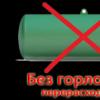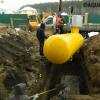Adapters are a type of fitting. They are usually used when it is required to connect pipes of various diameters and configurations. There are many different types of these elements. They are divided into the following types: "American", futorki, driving, nipples. These elements are classified according to configuration and scope of use.
Varieties
The most common elements are polypropylene adapters. However, products may not always be made of polymers. It all depends on the specifics of the work. If the system is made of ferrous metal, then it will require steel or cast iron fittings.
A popular option is coated non-ferrous metal adapters. The product itself is made of, for example, copper, polymers act as a coating. This combination allows you to achieve maximum reliability, strength and aesthetics of the elements. Standard overhang includes a pipe segment, at both ends of which a thread is made. The thread can be different: small, long with a coupling and a lock nut.
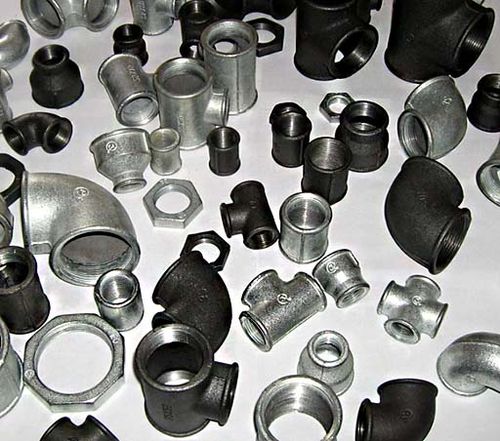
Characteristics
Adapters are intended for reliable fastening of pipes of different values. With their help, it is possible to install water-folding fittings, install a heating system and much more. In addition, special insulating fittings can be found on sale. They are made of polymers and fiberglass. Such fittings are used on pipelines and other large-scale structures. Their main distinguishing feature is resistance to stray currents.
It is also worth noting fittings for polypropylene pipes. They are made in the form of one-piece joints. Products are made by welding a steel pipe and part of a pipe made of polyethylene. Elements are often used to organize heating systems. They allow you to fasten plastic and metal parts of the pipeline. In addition, the product provides a high-quality insert in steel structures, their connection with polymer structures.
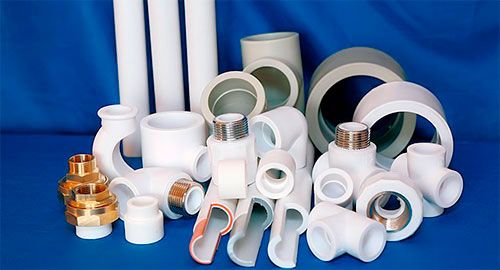
Elements are also performed by welding the threaded part with elastomers. The threaded rate differs on the external and external. Polypropylene adapters can be equipped with a special heating coil. This is necessary in order to install the part in the pipeline in difficult access conditions. So installation becomes simpler and faster.
It is also worth noting the nipples. At their ends are threads. The ends of the product themselves have different diameters. From standard models they are distinguished by the middle part, made in the form of a nut. Such elements can be made of a variety of materials: non-ferrous and ferrous metals, polyethylene. Products can be polypropylene, without reinforcement and with it. Such fittings are intended for installation of pipes of various sizes, installation of designs of heating systems.

Another type of adapters is footwork. Their appearance is remarkable. Futorki are a short tube with thick walls. The product is equipped with external and internal threads. The top is made under the nut. Futorki are made of different types of polymers. Their purpose is to connect structures with different diameters.
Very popular are the "American". They are intended for the installation of plastic structures. They are a detachable connection with a union nut. A tightening nut is necessary for high-quality and durable joint sealing. "American" is divided into various types: straight, angular, with rubber gasket, with paronite gasket, without gasket.

Often used when installation is made in difficult access conditions, when tightening structures is particularly difficult. The kit "American" includes several fittings with thread, characterized by a flat or conical mount, gasket. Additional elements - ring or union nut. However, they may not always be included. It all depends on the type of "American".
- Conical products, if they are made efficiently, are characterized by increased reliability;
- If you have a flat gasket, you will need to tighten the nut;
- If there is a rubber gasket, it is difficult to carry out scheduled repairs. Firstly, such a gasket is subject to rapid wear. Secondly, for work it is necessary to get a special key.
Adapters are required for installation work quite often. It is recommended to mount them in important nodes of the pipeline. It will be better if the fittings are located on both sides of the structure. In this case, system maintenance becomes easier and faster.

Mounting Features
Before you complete the installation, be sure to look at the photo of installation. So you can clearly see how to properly carry out the work. Installation of such fittings is quite simple. This requires placing one end of the structure in the fitting and then tightening the nut. At the same time, the gasket is compressed. Similar actions are done with the second design. Work with structures can be performed simultaneously. This will require wrenches. The nuts are tightened by 1.5 turns.
An important advantage of such a connection is that with it, the system can be disassembled and then reassembled. This greatly facilitates possible repair and maintenance work. Connections can be used to switch from structures from PP to structures from PVC, from cast-iron structures to steel or lead structures. With their help, the transition to the plugs for heating systems, sewage, water supply can be performed. Elements are suitable for the transition of pressureless sewer structures to threaded structures, the withdrawal of sewage pipes from a building, the fastening of structures to a septic tank or main sewer.
Products are recommended for use in cases where the differences reach 5-10 cm, and therefore it is impossible to use standard connections. Despite the high quality and functionality of these products, it is recommended to use sealant during installation. It is necessary for the system to become even more reliable. In the event that the element is used for sewer systems, it is recommended to install it under a certain clone, otherwise the design will clog.
You can see in the photo how various adapters look (for heating, sewage, water supply and many others).
Several methods can be used to create water supply pipelines from various materials. In addition to welding, there are more convenient and practical solutions.
In particular, adapters for water or heating pipes allow quick and detachable connections.
Product Features
In fact - the adapter is called the same fitting. It is a compact product with 2-4 holes, to which pnd pipes and plumbing can be connected.
It serves as a quick connection that can be performed without additional devices - with bare hands.
It goes without saying that PND segments connected in this way can hardly be called reliable, so they are not suitable for high-pressure water pipelines. However, for such purposes they are not used.
Here is a list of the benefits of using this installation method:
- extremely quick and easy installation;
- the ability to quickly dismantle;
- lack of need for special equipment and tools, both for installation and dismantling;
- tightness and reliability of the connection;
- the availability of adapters for any materials, diameters and systems (as intended).
It was mentioned above about quick installation and dismantling, as well as about the possibility of connecting without tools and equipment.
However, it is also possible to mount the segments using an adapter and by welding, achieving ultimate tightness of the water supply unit.
The disadvantages of such products, in fact, do not exist.
In addition, it should be noted that the use of adapters allows you to solve two fairly common and very relevant problems:
- Connect pipes from two different materials: for example, polypropylene and metal.
- Connect water supply pipes with different diameters.
Types and differences
The classification of products of this plan is carried out according to the following criteria:
- In diameter.
- According to the material.
- By appointment (by how many segments and at what angle will be connected).
- By scope of application (for which particular system will be used).
In diameter
It goes without saying that the adapters, the installation of which is carried out manually, are not very suitable for connecting large-diameter pipes (sewer pipe). So most often they are used only for segments of small cross section.
The most common rubber cuff or products with a diameter of 4 to 29 mm. There are larger options, however, this is the most popular and most frequently used range.
As mentioned above, polypropylene exists not only for one-dimensional segments.
On sale you can find an adapter for polypropylene pipelines of different diameters - which is very, very convenient, since during installation it is often possible to encounter a similar need.
By material
The product itself must be made of the same material as the pipeline. Therefore, on sale are:
- adapters for metal plastic pipes;
- plastic pnd adapters (polypropylene) for plastic pipelines;
- adapter sleeve for steel pipes.
The most common options are listed above. There is also a rubber cuff, a product that allows you to mount less popular products - for example, an adapter for a cast-iron pipe, plumbing that is gradually becoming obsolete.
The possibility of creating polypropylene pipe joints made of different materials has also been mentioned. For such situations, there are special Rehau fittings.

Moreover, there are both popular options (from metal-plastic to plastic pnd, for example), and rarely used ones, such as a plastic pnd adapter to a cast-iron pipe, a rubber sleeve, and so on.
By appointment
In this regard, products are classified according to the following parameters:
- In the direction of movement of the medium, there are both direct adapters and adapters that change the angle of the pipeline.
- By the number of connected segments, there are adapters used to connect two segments, as well as tees, as well as products connecting 4 segments at once.
By application
In this regard, products are divided into several directions. In particular, there are:
- Cuff (polypropylene) for sewer pipes - more resistant to corrosion, overgrowth and development of biological organisms. For such tasks, rubber adapters for sewer pipes are also used - products made of plastic or steel, and inside having a seal (rubber sleeve).
- Pipeline for heating pipes - products that are resistant to high temperature.
- Cuff for gas pipes - in such products, the emphasis is on the maximum possible tightness of the connection.
However, conventional adapters, which in no way belong to any category, can also be used in the above systems.
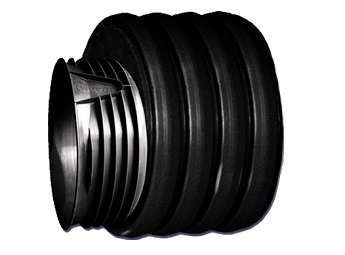
Of course, one should pay attention to temperature conditions or pressure - but otherwise there are no restrictions.
More on metal products
Metal adapter is one of the most popular products, it requires more detailed attention. They are made of various materials - from mild steel to pure copper.
From this, their durability, heat transfer, reliability, withstand temperature and weight vary. In addition, some products may also have a non-ferrous metal coating - its task is to improve the corrosion resistance of products.
The products themselves are divided into a number of categories having certain properties. The list is as follows:
- Direct transitions connected by a thread (inner cone). The working diameter of such products varies from 4 x 11 mm to 20 x 29 mm. Steel adapter for pipe type is standardized according to GOST 16052-70.
- Direct transitions connected by a thread (outer cone). Overall ranges - from M8 x M10 to M39 x M45. Products are standardized according to GOST 13961-74.
- Direct transitions connected by a thread (outer cone), in addition having seals made of rubber. They are used to connect segments with sizes from M12 x M16 to M42 x M33. The product is standardized in accordance with GOST 20196-74.
- Direct transitions for copper pipes that can be connected by threading (can be done externally or internally), press sleeves or capillary brazing. The purpose of the products is the installation of water supply systems (both drinking and technical). The diameter of the segments is from 1/8 to 4 inches.
- Products for welded joints. Intend for segments with a diameter from 20 to 1000 mm. Normalized according to GOST 17378-2001.
More on plastic products
Polymer products, which flooded the market at the beginning of the “zero”, quickly won the recognition of customers. Now often when choosing pipelines for various purposes, people prefer to choose precisely plastic.

It is cheap, practical, corrosion resistant, easy to install - its popularity is easy to explain. Of course, adapters for plastic pipes are using a growing need.
Like metal products, adapters for plastic pipes, also have several subspecies:
- Adapters for PVC pipes used for pressure or pressureless pipelines. The system pressure should not exceed 16 atmospheres. The most popular are rubber, designed for connecting segments with a diameter of 50 or 100 mm - since they are most often used in sewers.
- Polyethylene products used for overhead or underground installation. The most massive and most common segment. Adapters for sewer pipes are used, as the previous version. The maximum diameter is up to 400 mm. Available as regular options, also reinforced with aluminum or fiberglass.
- Adapters for polypropylene pipes. Scope - heating collectors (maximum temperature - up to +120 degrees) or cold water supply systems. The maximum diameter of the product is up to 400 mm.
- Composite products - this category includes fittings made of polymer with metal sleeves. They are used for mounting segments of different materials and different diameters. For the metal part, the limiting diameter is 60 mm, and the polymer - 400.
The nuances of choice
In addition to the obvious tips that choosing products of this type should be for a certain diameter or a certain material, there are several more nuances.
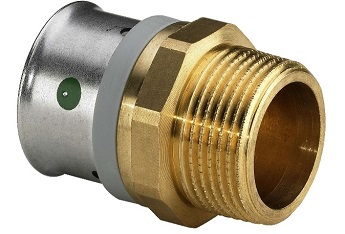
The list is as follows:
- Of course - we evaluate the appearance of the product. The thread should be complete, the body should not be bent, without chips.
- It is recommended to choose products that have a conical shape - they are more reliable.
- Pay attention to the gasket, which is located inside. If it is flat, the nut will have to be tightened with a wrench.
- If this gasket is made of rubber - keep in mind that it wears out faster, and during repair work, most likely, it will require replacement.
Now we mention the cost of products:
- PVC adapters for sewer pipes, diameter 50 mm - about $ 5-7;
- pElatun adapter (diameter - 40 mm x 1 inch), for electrodiffusion welding - about $ 25-30;
- an adapter for cast-iron pipes, diameter 50 mm - about $ 5;
- adapter with internal thread, 40 mm to 1 14 inches, Rehau Rautitan - about $ 20;
- corner adapter (at 90 degrees), external thread, 26 mm by 34 inches - about $ 8.
Product Overview (video)
Installation Nuances
There are several ways to create connections using adapters. Consider each of them briefly:
- Glue. Suitable for polypropylene or PVC, when installing cold water pipelines. The maximum possible diameter is up to 400 mm (recommended below). In this case, the edges of the pipes are coated on the outside with glue, which is applied to the inner walls of the adapter. After which the products are docked.
- Welding. It can be used on products from any materials. It is carried out by means of a special welding machine (metal) or a soldering iron (polymers). It is applied on segments with a diameter up to 400 mm. In case connection of pipes of larger diameter is required, then adapters are not used, and segments are butt welded.
- Thread. The simplest option is through union nuts. Applicable to threaded pipes. In this case, the nut is simply screwed onto the segment manually, after which it is tightened with a key (if necessary).
Adapters for plastic pipes are special adapters for connection that help to assemble the piping system. Such parts serve not only as a transition from plastic to metal, but also for connecting pipe material of various diameters, and also contributes to the formation of the desired angle of rotation and branching of the pipeline. Adapters are also called fittings and using these parts you can easily assemble pipeline system any complexity, while spending a minimum of time and effort.
Some adapters, for example, external ones, are manually connected to plastic pipes. A similar connection method is reliable and is also used for high pressure pipes.
The adapter differs from the coupling by the internal diameter on two different sides of the barrel. In addition, adapters are made from polypropylene to threaded connections. Such parts have either internal or external threads. Sometimes you can’t do without transitions to the thread. Diameter transitions can be seen, for example, at the end risers of the heating or at the junction of the riser with the bench (horizontal wiring of the heating system).
When installing a water supply system, pipeline or sewage system, it becomes necessary to use different materials, pipes, fittings and other parts.
Features of adapters for plastic pipes
Today, a pipeline is no longer a simple lingering pipe that is connected to a water source and place of supply. At the moment, the development of plumbing has gone far ahead, as many parts are made from different materials, with different designs and different diameters.
All this variety of details often needs to be assembled into a single working system that will be resistant to unintended circumstances. Adapters for pipes of various diameters, suitable for installation of a water supply and sewage system, will help to solve this issue.
So modern water pipes assembled from many parts. The same branch of the water supply system may consist of pipe sections, the connection of which is carried out by means of couplings with a mounted system of taps, tees, transitions and other parts of different diameters.
However, the active development of plumbing has several drawbacks. One of the main problems is the mismatch of details. As you know, for reliable interaction and connection with each other, pipes or other components of the water supply system must coincide in all respects. If, for example, pipes of different diameters are used on the site, then it is unrealistic to turn them into a single structure by welding or to make a connection with a standard coupling. Pipes and fittings of various materials and diameters have the same limitations.
The purpose of the adapters. Adapters for different pipe diameters
If earlier all pipes and components were made of metal, today not only metal pipes are on sale, but also steel, plastic, brass, copper and other types of various diameters. And, for example, plastic pipes can be divided among themselves by type of material and diameter: from polypropylene and HDPE to PVC and polyethylene.
Thus, a couple of main directions of application of adapters are highlighted:
- connection of pipes of different diameters;
- connection of pipes of different materials.
Two of these areas make adapters popular and in demand today.
Adapters of this type are used in work quite often. Their main task is to connect pipes with different diameters. There are situations when the tee is incorrectly selected, or the design features of the pipeline do not allow the required diameter to be used. In this case, the problem arises: the output of the first pipe is greater or less than the output of the second. The way out of this situation is simple - use an adapter.
The adapter for various diameters is a simple coupling with outputs of different diameters. The coupling can be either direct or offset. The direct coupling consists of a straight central axis with the same diameter of the holes in the place of its passage. An offset coupling is characterized by inlet planes offset in relation to each other. It is also called an eccentric. Adapters internal and external are either threaded or welded. If plastic products are used for installation, then preference is given to welded products, and if metal products, then you can not do without threaded adapters.
Adapters for different materials
A fairly common situation is the mismatch of the materials from which the pipe is manufactured. This material mismatch is the most difficult to eliminate. However, this problem can be solved if necessary.
Material mismatch can occur for the following reasons:
- desire to save on individual sections of the pipeline;
- partial modernization;
- the impracticability of the purchase of the necessary materials in full.
For example, there is a certain water supply system, the installation of which was carried out decades ago. The main material of the pipeline is steel. For modernization, it is necessary to replace part of the pipes with polypropylene or HDPE materials (HDPE is suitable for external water supply systems). In this situation, you need to buy adapters. They perform the connection of any materials with each other. For example, a threaded adapter that allows you to connect polypropylene and steel has, on the one hand, an integrated brass thread, and on the other, a plastic thread or a special end for welding.
Installation of adapters for plastic pipes
It is important to choose adapters from plastic for the pipeline, taking into account the composition of the pipes, which can be:
- polyethylene;
- polypropylene;
- polyvinyl chloride (or adapters for PVC pipes).
Installation of plastic fittings of different diameters (adapters) is carried out in different ways. The type of connection may depend on the type of polymer, and on the diameter of the pipes and the purpose of the pipeline. Often there is a need to replace a section of a rotten pipeline with a plastic pipe. In this case, you will need to connect the cast iron / steel pipe to the polymer pipe using internal and external adapters. For such a connection, the following details are needed:
- a combined adapter with a metal element from a thread (for example, brass) and a polymer bell with a rubber seal;
- two adjustable wrenches;
- teflon tape (tow).
The first step is to unscrew the metal pipe coupling in the right place with a pair of adjustable wrenches. One key is for the coupling, and the other is for the metal pipe. If the connection fails, then special grease must be used.
The second stage begins when the previous pipe is unscrewed and consists in sealing the threaded joints with Teflon tape. This precaution will prevent leaks. The third stage is the installation of an adapter of any diameter. Tighten the adapter carefully until resistance.
Plastic sewer pipe fittings
There are several ways to install devices:
- crimp installation. Suitable for the assembly of polyethylene and metal-plastic pipes;
- glue fixation. Used in the assembly of polypropylene pipelines, PVC pipes and other PVC adhesive fittings;
- fixation for welding. It is used to connect structures made of polyethylene and polypropylene;
- socket fixing for PVC / polyethylene systems. It is carried out by means of a crimp seal made of rubber or by gluing the joint.
Internal and external sewer adapters are popular devices that are installed during the installation of the pipeline with the aim of transferring or joining parts of different diameters and sizes or joining systems made of different materials. With the help of fittings, any nodes of the pipeline become airtight. In addition, both external and internal fittings make the transition from PP elements to elements of devices such as PVC sewer pipes for internal sewage and elements of cast-iron fittings to steel systems. Such devices are not afraid of corrosion, and their use ensures the safety of the drainage system and sewage. They have different inner diameters on the sides of the barrel.
Sewer pipes made of plastic and PVC adapters are compatible with each other, they require the use of simple sealing rings of the required diameter.
Using Sewer Adapters
The use of internal and external adapters of sewer pipes made of plastic occurs more often, since with their help the transition from cast-iron pipes to a plastic pipeline is ensured. Rubber seals are also used for connecting pipes, which are components of rubber adapters for sewer pipes.
Transitional internal and external fittings for sewer pipes allow you to connect dissimilar elements of the highway with different diameters. Fittings with transition to threaded connections in sewer pipes used extremely rarely.
A special type of fitting is a tee. If you need to connect several pipes, then a fitting in the form of a tee is suitable. Tees can be with different diameters and tees as external and internal fittings with thread for other types of pipes. It is best to connect dissimilar pipes through a simple thread that tees and adapters are always on.
There are many sewer adapters, the main function of which is to connect the nozzles of a variety of material and diameter. There are two types of adapters for sewerage:
- connecting parts of different sections;
- connecting parts from dissimilar materials.
Not a single pipeline is complete without use stop valves. And it does not matter if the water supply and sewerage system is internal or external. In any case, sections of routes must be connected with each other and with equipment, and for this, adapters for pipes are necessary. Today, technology allows the manufacture of such parts from cast iron, plastic, polypropylene, steel, PVC and other materials. Some of them will be discussed in this article.
Water supply from metal components
Fittings for metal pipes
Types of Sub
When installing highways from metal structures use the following types of connecting fittings.
- Straight (with a threaded connection on the inner cone). The products are designed to work with collectors ranging in size from 4x11 to 20x29 mm.
- Straight (with threaded connection on the outer cone). Elements of sections of tracks with diameters from M8xM10 to M39xM45 are joined.
- Straight (with a threaded connection on the outer cone using rubber seals). Such threaded adapters are used for pipes with diameters from M12 x M16 to M42 x M33;
- Straight (for joining parts made of copper). The edges of the sub are made so that it is possible to conduct capillary welding, threaded connection or apply a press sleeve. Used in the installation of industrial and drinking water pipelines to connect sections with sizes of 1/8 - 4 inches. The threaded connection in this case is done on a nipple (external thread) or a coupling (internal thread).
- Adapters or special fittings for welding. These elements join sections of networks with a diameter of 20-1000 mm.

Metal connectors
Connecting fittings are made from low carbon steels, copper and copper alloys. Some adapters have extra coverage. For example, nickel elements are made of steel and coated with non-ferrous metal to improve anti-corrosion properties.
Mounting Methods
This type of fittings is mounted in four ways.
- Installation on a threaded connection allows joining sections of networks with profile sizes up to 45 mm.
- Collectors that have a diameter of up to 4 inches are joined by adapters for plastic pipes by soldering.
- Connecting elements of pipelines with dimensions up to 100 mm are fixed using a press sleeve.
- By welding, even meter profiles can be combined into one.
Adapters for plastic pipes
Assortment Fittings
The plasticity of polymers and the simplest processing technology allow you to use a wide range of plastic connectors. Depending on the material from which the sub is made, they are divided into the following varieties.

Fittings for joining plastic pipes
- Polyvinyl chloride junctions and adapters. They are used as connecting elements for the sewage system at pressures in systems up to 1.6 MPa and the size of the joined parts 50 and 100 mm.
- Polyethylene fittings. Cover three quarters of the market and are used for ground and underground collectors. Polymer and composite (reinforced with fiberglass or aluminum foil) products have a diameter of up to 400 mm.
- Adapters for polypropylene pipes. They are used in plumbing and heating systems because they withstand temperatures up to 120 ° C. The size of the profile of the elements is limited to 400 mm.
- Compositional translators. These polymer fittings are equipped with metal sleeves, which connects structures made of different materials.
- Metal fittings. Steel, brass, copper and aluminum sub are used both on technical and drinking pipelines. Elements made of low carbon steel are used only on technical networks and gas pipelines.
Mounting Features
According to state standards, plastic pipe adapters are mounted in the following ways.

When mounting adapters, thread, soldering and welding are used.
- Crimp way. Polyethylene and metal-plastic water pipes in this case are connected by collet or press fittings. The method is economically justified with a diameter of networks up to 60 mm.
- Fixing on glue. So systems from polypropylene or polyvinyl chloride are connected. The fixing method has advantages over welding when the diameter of the sections does not exceed 250 mm.
- Fixing by welding. The method is used on collectors made of polypropylene and polyethylene with profile sizes from 20 to 400 mm. With a diameter of structures over 400 mm, the use of fittings is not economically justified, and therefore they are butt welded.
On a note! There is also a method of connecting pipelines "to the socket". It is used for polyethylene and polyvinyl chloride networks. This method of fixation includes two options for sealing joints - adhesive bonding and the participation of a crimp rubber seal. For this reason, the “bell-shaped” method cannot be considered an “independent” technological process.
Before buying plumbing pipes and adapters, we advise you to draw up a communication system diagram. So you only buy the necessary transitions and pipes, without spending money on extra parts. We wish you success!
Pipe adapters play a major role in every connecting water supply process. With their help, you can collect the water supply of any engineering design in a short time and with minimal financial outlay.
Variety of water adapters
Adapters for pipes differ in their individual properties and destinations, and are classified according to such signs:
material;
destination.
If the installation of the pipeline is carried out independently, then not all transitional devices are suitable for the assembly of a wide pipeline. They are most suitable for small sections. Widely used is a rubberized cuff or device from 3 to 25 mm. Adapters for pipes of different diameters can be installed on propylene products with a single segment.
The device is selected strictly according to the pipeline. On the shelves you can find devices for metal-plastic, polypropylene, an adapter for steel material.
According to the purpose of the device for the transition are divided into several directions. For example, a spare for the water supply system is resistant to scale and rust, and the accumulation of chlorine and grease on the inner walls. For these purposes, there are adapters for pipes made of rubber. But the adapters for metal pipes consist of an alloy of copper and low-carbon steel. Based on the material, their service life, thermal efficiency fluctuates. To prevent corrosion, the products are coated with precious metal. But there are other devices. Consider them.
Types of adapters by purpose
Plastic plastic fittings have a low price, have reliable sealing, are not subject to deformation and corrosion. Serve as a practical connection for plastic products.
A contour is a type of fitting fixtures that have the ability to wrap onto a pipeline without additional sections and fittings. Pipe adapters are used in areas where two water supply lines must create one without connecting to each other.

Support - the most applicable for polypropylene products when creating a hot water supply. The purpose of the device is based on the strong bond of the pipe, necessary for thermal expansion. It is also possible to use the remote installation of the boiler for water heating.
Coupling - has the ability to connect different sizes of pipes in the house. Some models of couplings are designed for wrapping plastic, which allows welding from two sides and modification of the wiring of a plastic piece to a pipe of another material with a single-sided notch.
Valves are used for pipes of hot and cold water supply. Models have different purposes, in which their tightness changes under the influence of temperatures.
American - adapters for universal pipes. Used to replace plumbing communications in an inaccessible area, which requires connection.
The tee is necessary for the fork in the water supply line. The central part of the tee has a slope of 45 degrees. Tees have several types of diametric indicators used for all kinds of joints.
The spider is a fitting element that serves as a durable pipe connector for supplying water or a separate system. The crosspiece is endowed with bends with right angles in a ratio of two adjacent.
The plug serves as a protective adapter for the pipe lines during their transportation. If necessary, the plug can be connected to models of fittings, which allows you to create a triple adapter. 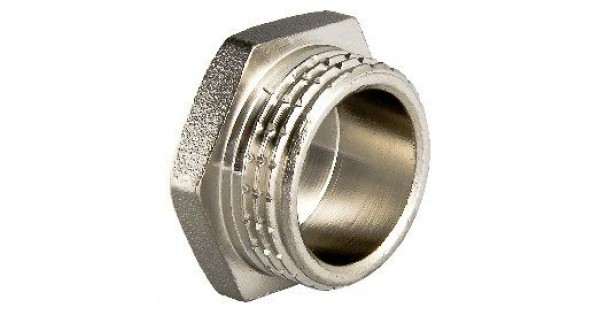
Selection rules
When choosing a tee for a water supply system, the following nuances should be taken into account. First, the notches on the product must be equilateral, the upper part is not bent, without cuts. For high-quality sealing, preference should be given to conical shaped products.
The second - the gasket inside the product should be grooved. Flat rubber gaskets are most susceptible to abrasion.
Mounting Features
The connection of the pipeline using transition elements has many options, each of which is endowed with individual features. The glue joint is used for PVC products to equip the cold water supply line. The diameter of the fitting should be within 30 mm. To create a joint, the ends of the pipe on the surface are lubricated with glue, and then connected to another pipe segment.
Welding can be used for any pipeline materials. The process is carried out using a welding soldering iron or inverter for polymer products. Pipe adapters should have a 40 mm segment. If wide products are used, a transition mechanism is not required, and welding is overlapped.
The threaded connection process is carried out thanks to the threaded nuts. They are used only on pipes with the appropriate section. The method is the simplest, since it is only necessary to screw a nut onto a segment of a pipeline element.

